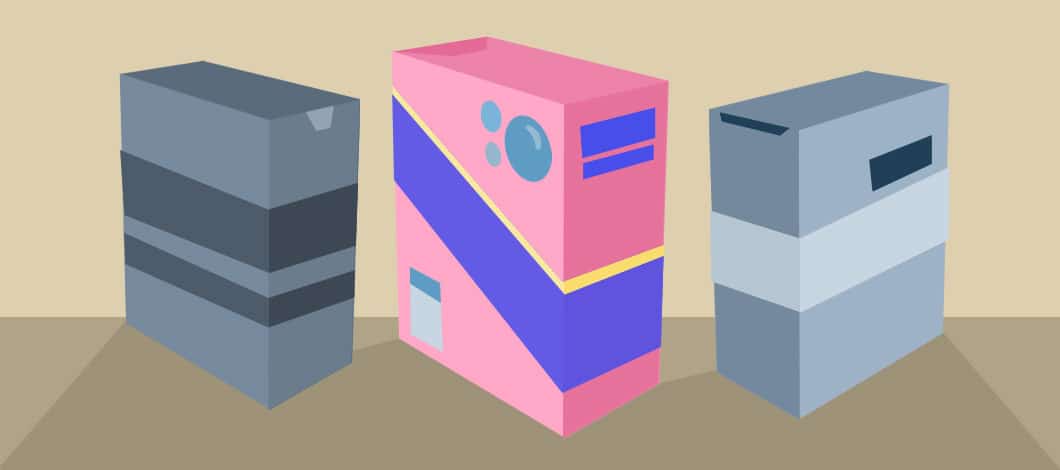Product differentiation distinguishes your goods or services from those sold by other companies.
Therefore, it’s a marketing strategy designed to appeal to your target audience and increase brand awareness. Follow these steps to showcase your product’s unique qualities.
Product Differentiation: What It Is and Why It Matters
Product differentiation is why someone grabs your product off a shelf instead of a competing brand’s item.
For ecommerce, product or market differentiation draws consumers to your website and compels them to click buy or sign-up for a service.
Your product design, packaging and pricing play a role. As your company earns recognition, your brand name also can attract shoppers. But, ultimately, it’s your marketing that guides consumer decisions, as Harvard Business Review notes.
For small businesses, product differentiation combined with a strong value proposition can give companies a much-needed competitive edge.
Buying Decisions and the Consumer
Although some decisions are based on personal taste, others involve clear-cut factors about a product or service.
Consumers use 3 distinct types of product differentiation to make a decision:
- Horizontal differentiation: When all goods appear nearly equal, customers pick one based on their personal opinion, taste or feeling.
- Vertical differentiation: Consumers rank products using a measurement important to them, such as price, quality or shipping availability.
- Mixed differentiation: An approach that factors product rankings and personal taste to choose one product or service over another.
Consumer Product Differentiation Examples
A customer starting a landscaping project may run to the store to buy a few items on their shopping list.
When faced with a row of hand shovels, they may rank items by price and quality (vertical differentiation). If all tools look and are priced similarly, they’ll grab one in their favorite color (horizontal differentiation).
But, if the customer has arthritis, they’ll search for tools with an ergonomic handle and product packaging that addresses their concern. The winning product also matches their tool bag (mixed differentiation).

Product Differentiation Methods Used by Brands
Product differentiation starts long before launching a product. Additionally, the focus may change over time, based on market or competitor insights.
Distinguishing your goods or services relies, in part, on knowing your audience.
For instance, if your outdoor home brand targets young millennials with families, a low-cost hand shovel bundled with a matching children’s tool can seal the deal.
On the other hand, older millennials and Generation Xers may pay a little more for a tool with a soft grip and a 3-year warranty.
Even your distribution channels can separate your item from the rest. A digital-first customer may pick your tool because they can buy it online versus running to a store.
Companies that use a differentiation strategy may focus on:
- Functional features
- Price
- Packaging
- Country of origin
- Customer service or support
- Quality
- A social or economic stance
- Customization
- Bonus or bundled items
- Reliability
- Brand reputation
- A problem solved by your product
- Appearance
- Customer experience
- Distribution channels
The Core Benefits of Successful Product Differentiation
Companies that use product differentiation and devise a comprehensive marketing strategy can capture a higher market share while amplifying their brand in the public eye.
The advantages of product differentiation include:
- Grow brand loyalty and awareness: Having one or more products that stand out from other items may make your brand recognizable and result in repeat purchases.
- Enhance the perception of value: A consistent, cohesive marketing strategy can drive people to view your product as more worthy than a competitor’s item.
- Increase sales and revenue: Well-distinguished products may capture a higher price point and generate more sales than goods that don’t stand out.
- Expand product life cycle: Companies that adjust points of differentiation over time can keep a product or service in the public eye longer.
The Disadvantages of Product Differentiation
Although your unique selling proposition (USP) and product differentiation can drive sales, marketing is expensive, and the benefits don’t always last forever.
Over time, the market may become saturated with competitors offering nearly identical items, leading to a decline in your product’s perceived value.
For small businesses, product differentiation can be a costly investment and need revisiting every few years.
Moreover, there are no guarantees that your product differentiation strategy will increase revenue or brand awareness.

5 Steps to Distinguish Your Product or Service
Right off the bat, you may have an idea of what makes your goods or services different. But having good data and using that information can save your small business time and money.
Develop a successful product differentiation strategy by following the steps below.
1. Understand Shoppers and Their Priorities
Occasionally, your audience demographics provide enough information to develop selling points, especially if your product is new or unique.
However, if you’re entering a crowded market, it helps to dive into the details.
Some inexpensive ways to research current and potential customers include:
- Focus groups: Online or in-person meetings can gauge first impressions on products, packaging or messages.
- Polls: Create a series of polls to use on social media and email that ask yes or no questions, offer multiple choice answers or compare 2 ideas.
- Customer surveys: Send current clients a business survey concentrated on possible differentiators and their experience with your product or brand.
- Research: Take a look at reviews on several channels and look for key themes related to your audience, industry or product.
2. Perform Competitive Research
Identify several direct competitors and at least 2 indirect competitors. Add them to a spreadsheet along with the basic information about their product or service. The details may cover price, USP and company background.
For each competing product, list its features. Then, take a look at the list of product differentiation methods (price, packaging, quality, etc.) and add notes relating to how your competitor differentiates their product.
Next, decide if these factors are similar to your product or different. Then categorize each feature as your competitor’s strength or weakness.
Verify your data by looking at customer reviews and social media mentions to find patterns that you can attribute to various features.
For example, a company offering hassle-free packaging for children’s toys may be a strength. But, if consumer reviews complain about toys arriving broken because the packaging wasn’t secure enough, it’s a weakness.
3. Analyze Your Product’s Strengths and Weaknesses
Now, take an equally critical look at your product. Use the format from your competitive research either in a new spreadsheet or a new tab.
This is a great time to put your market and customer research to use. Perhaps your focus group said your product tasted better but gravitated toward a competitors’ item because of its packaging.
Make a note of each factor and if it’s unique to your brand or product.
Lastly, get feedback from all department leaders by giving them access to the details about your product, competitors and market research.
With the hard work completed, use your competitor and market data to achieve product differentiation in marketing.
4. Explore Differentiation Opportunities Within Your Company
While small business owners tend to focus on how marketing influences opinions, there are other things to look into, such as:
- Production: Does your manufacturing or procurement process differ from other brands? Is this important to one of your market segments?
- Sales: Does your sales team speak and act in ways that support your key differentiators? A product that’s focused on personalization shouldn’t use generic sales tactics.
- Partnerships: Are you connected to other companies or partnered with a charity? Leverage your relationship for product differentiation.
- Marketing: Can you segment your audience to drive home specific benefits through campaigns or promotions?
- Customer support: Does your customer service team share client feedback with your marketing and sales staff? Analyzing conversations can reveal ways your product stands out.
5. Monitor Trends Affecting Customers or Products
Last year, your company may have sold out of pet toys used for fun interactions between pet owners and their animals. Indeed, your marketing likely focused on ways to keep pets busy while working from home.
However, many workers are now searching for safe ways to entertain pets left alone all day. Can your pet toy satisfy this new problem?
Companies realize the marketing benefits of product differentiation by shifting campaigns and promotions to meet changing trends and behaviors.
Develop a Product Differentiation Strategy That Works
Whether you’re in the product planning stage or brainstorming a marketing campaign, product differentiation can help your small business gain a competitive edge.
Use this approach to increase brand awareness and improve customer experiences.










